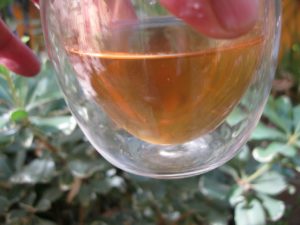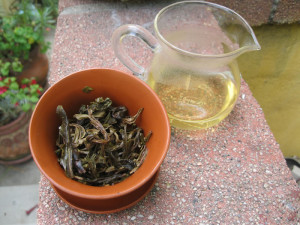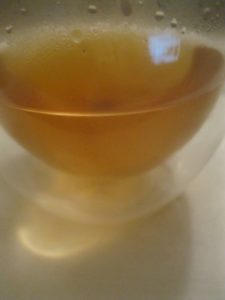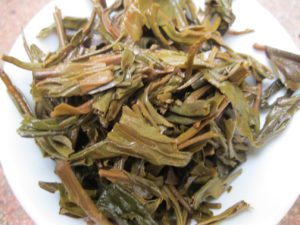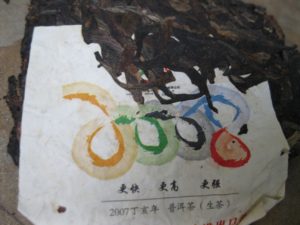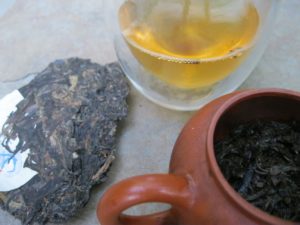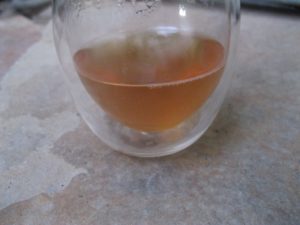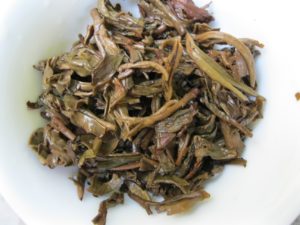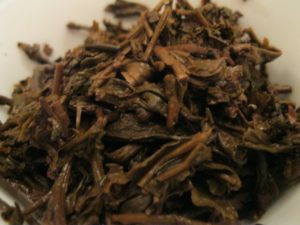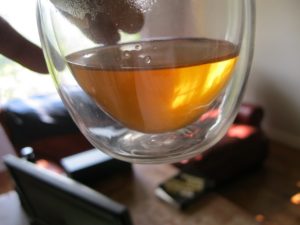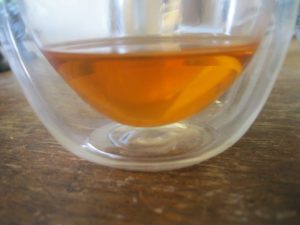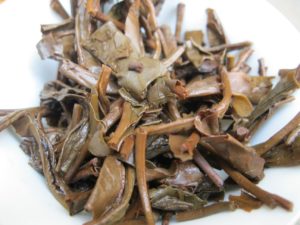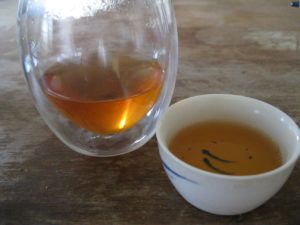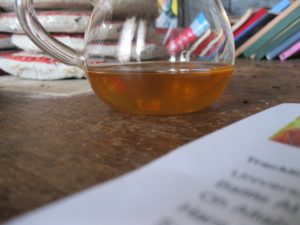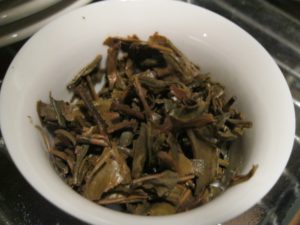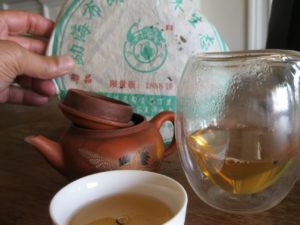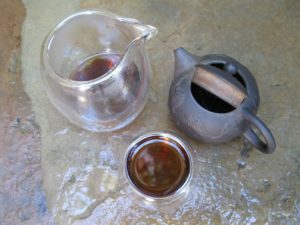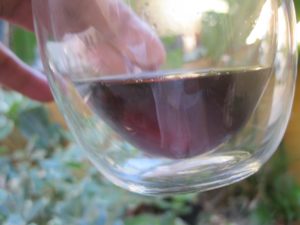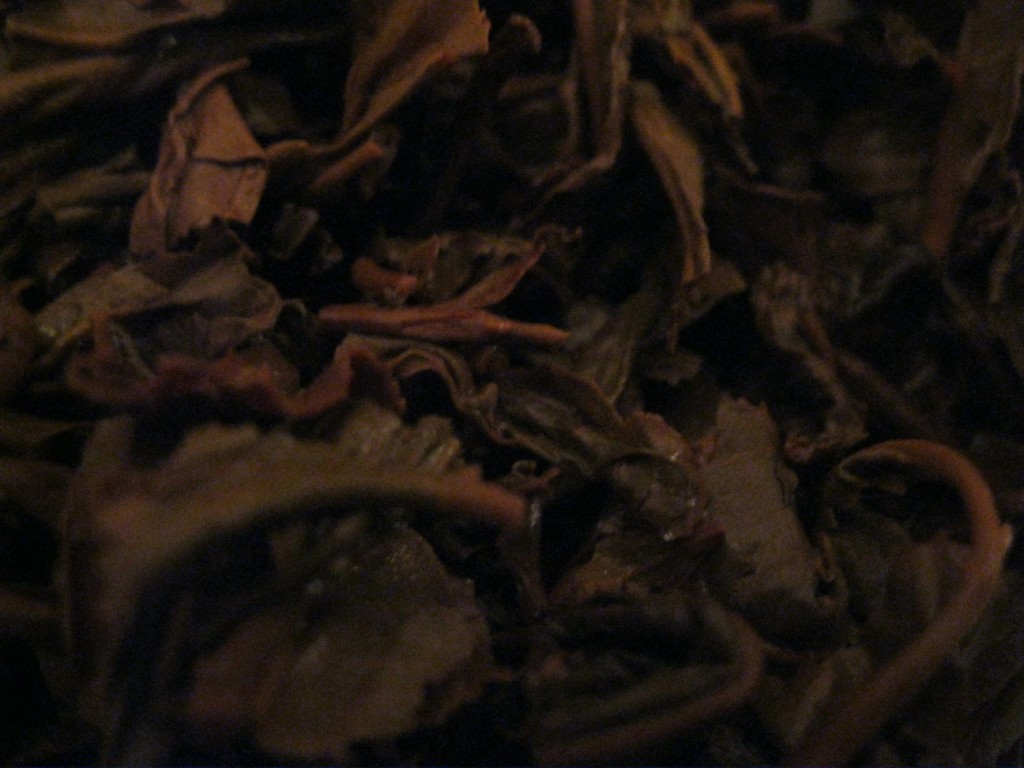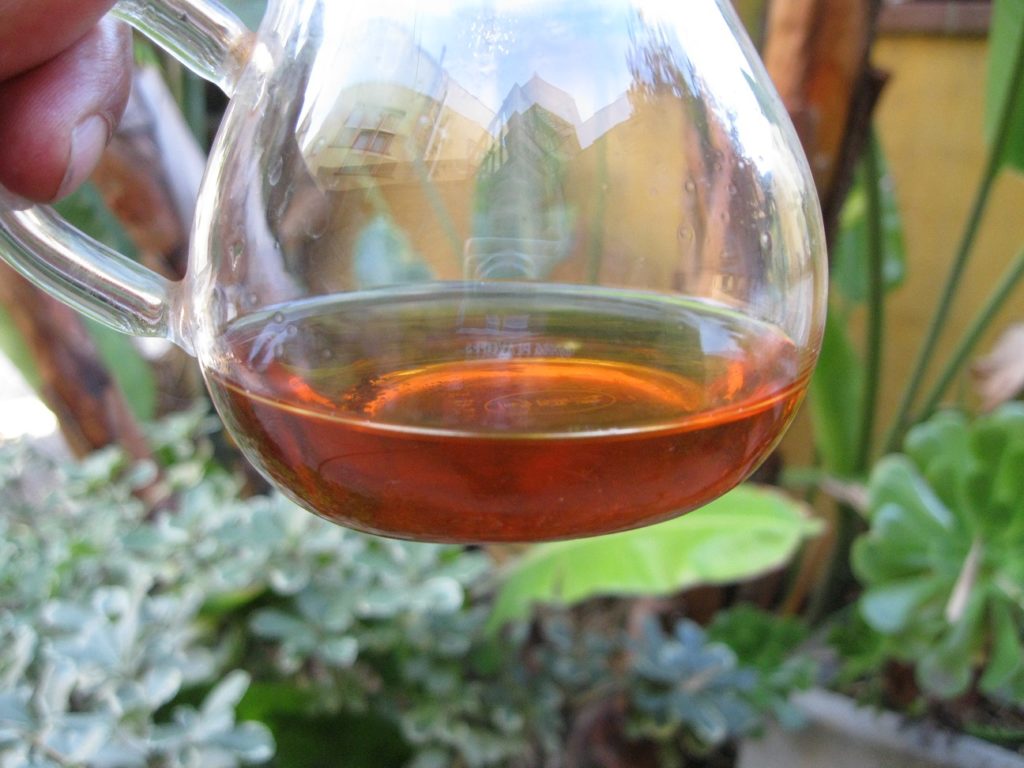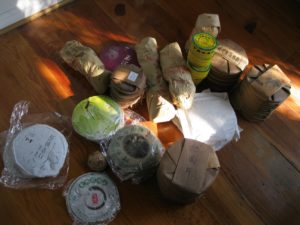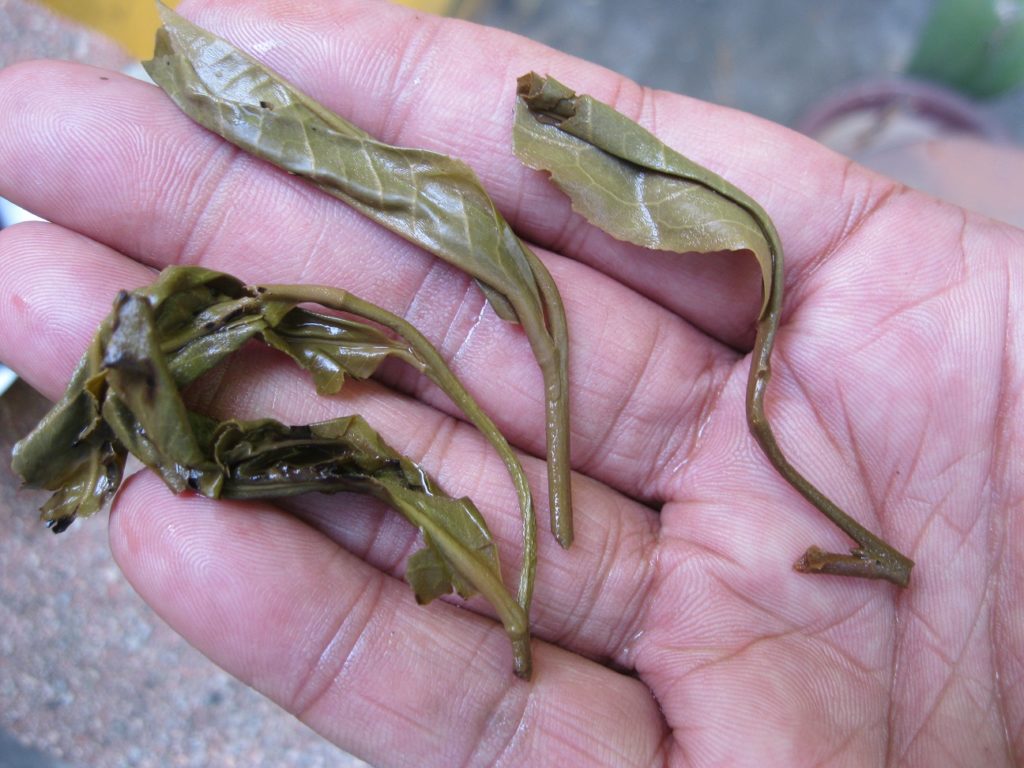12 Wangong and Yiwu Puerh in General
Sitting on this for four years has seen a good deal of transformation. Autumn tea. Some light fruitiness. Typical astringency for Yiwu material. It really is the case that Yiwu productions do benefit from years of storage. It’s gotten sweeter sweeter. The astringency is not as wicked as I recall. Here’s a shot from ’14:
Big difference in terms of color. There’s no old-taste to it yet. The fruitiness of the aroma seems to build as the session progresses. As luck would have it, it’s the third “Zen tea” I’ve visited this week. By “Zen tea,” we’re essentially talking about the gentle productions that taste like very lightly sweetened water. There’s no flash and pizzazz. You’ve got to sit with it a bit and try to figure it out. Most of the figuring will be around the astringency, which by the 9th infusion really starts churning in the stomach. I certainly would not drink this in the winter, though it seems fine enough on an empty stomach.
All of the Zen productions reviewed earlier this week are from ’07. They all possessed some measure of old taste. The most surprising was definitely the the Prince with a developing berriness that was nowhere detectable earlier. None possess any bitterness to speak of but the astringency is something to contend with.
Wan Gong material’s price has gone through the roof since ’14. So far my reaction to Yiwu has been highly variable, even the same production. I feel that it has been me more than any particular production. The jury is still out on Wangong. I feel that this Wangong is getting better, sweeter and less astringent.
I’d say about five more years. I’ve had some of these Yiwus from the late 90s. Spring tea, even some blend thereof, tends to be the best imho. These light ones strike me as being extremely challenging in some regards, especially if there aren’t any flowers to offset the subtlety of the autumn material.

